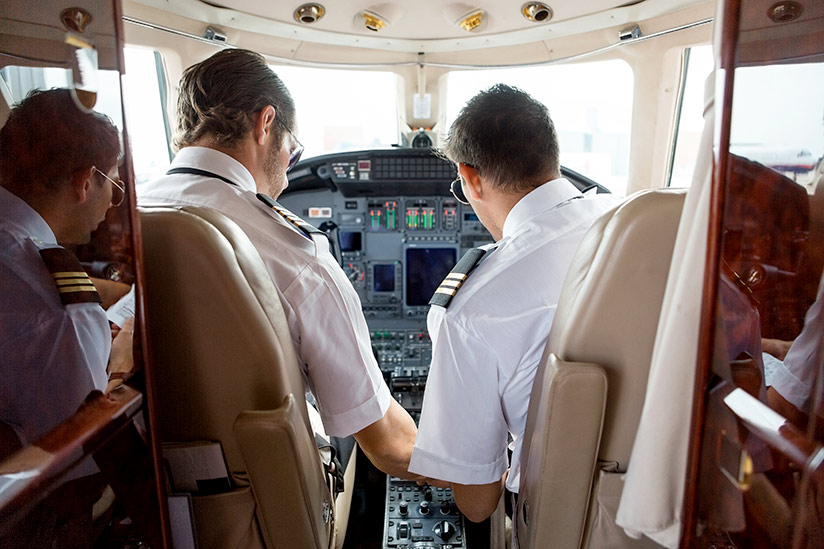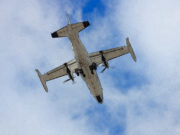
More than 25 percent of operators audited through Flight Safety Foundation’s Basic Aviation Risk Standard (BARS) Program provided pilots with no formal training in how to use onboard equipment designed to prevent collisions with terrain or other aircraft, according to a recent data analysis.
Some 140 aircraft operators – those providing regular contracted flights, occasional charter flights or regular passenger transport to a variety of organizations — were questioned during 542 safety audits conducted from 2012 through 2019. (Some operators were audited multiple times.) The BARS data analysis examined various personnel training matters, including the availability of training in the use of ground-proximity warning systems (GPWS) and traffic-alert and collision avoidance systems (TCAS).
The analysis was designed to identify “non-conformities” – areas in which the operators’ practices did not conform to BARS-recommended safety practices. Of 29 audit standards associated with personnel training, 563 findings were recorded against those standards, BARS Data Analysis Report No. 12 said.
The lack of GPWS and TCAS training was cited 38 times, the report said. Of the 38 findings, 16 percent were during an operator’s first BARS audit, 13 percent were in an operator’s second audit and 3 percent were in subsequent audits.
“This training addresses CFIT [controlled flight into terrain] and midair collision threats and is critical in mitigating these risks,” the report said.
BARS Program Managing Director David Anderson added that crew responses to GPWS alerts and TCAS advisories are “the last line of defence before the CFIT or midair collisions, and it is imperative that the response is timely and accurate. Therefore, the crew training, both initial and recurrent, is very important.”
The report said that 52 percent of the non-conformities on this point were cited in audits of operators in two BARS regions – southern and eastern Africa, and western and central Africa – with “significant shortfalls in aviation infrastructure.”
The document added, “This represents a failure of an opportunity to protect assets, both material and human. In some cases, the detail of the required training is overlooked and has not been identified by the operator’s training reviews.”
As for why operators would install the equipment but not follow through with training, Anderson said safety audits “do not always get quite the depth of insight as to why the problem is there.” In addition, operators often “just go fix the problem” rather than identifying the root cause, he said.
However, he noted that one factor is that the diversity of aircraft types within an individual organization can complicate efforts to achieve consistency in organizing a syllabus and managing and delivering training. For example, he cited one operator with 30 airplanes and helicopters, including “seven different types – … 10, if you count variants within types — and no more than six airframes of the same type. So imagine the training matrix this organization needs to develop for all these different needs.”
Changes in fleet composition are a related factor, he said, adding that operators participating in the BARS Program tend to add new aircraft types and remove others far more frequently than airlines alter their fleets. “These factors would be a challenge to the organisation’s training delivery,” he said.
The report noted that in a number of additional cases, the auditor’s assessment was “not applicable” because GPWS and TCAS equipment was not installed in the aircraft. The report recommended that operators consider installing the equipment, if it is available for the aircraft type.
“Such equipment, matched with suitable training, provides a significant safety improvement and greatly assists pilots in reducing workload and improving decision making,” the report said.
Minimum Experience
The most common area of non-conformity (with 97 findings) involved the operator’s lack of a system for identifying and managing flight crewmembers who meet the minimum experience requirements specified in the BAR Standard, the report said. Those requirements comprise 18 criteria, and all 18 must be met before a crewmember is considered to have achieved the standard.
“There are, therefore, many opportunities for one or more of those criteria to be overlooked,” the report said. “It is accepted that some operators employ personnel that do not have the necessary qualifications to fulfill all of the criteria; therefore, the operator’s crew management system must have the functionality to differentiate [among] those personnel.”
The report noted that many of the BARS criteria exceed regulatory minimum experience requirements, and operators sometimes said that they applied those less stringent requirements instead of the BARS requirements.
Crew Resource Management
There were 35 findings of non-conformity with a BAR Standard that calls for all crewmembers, including cabin crewmembers, to complete crew resource management/threat and error management (CRM/TEM) training at least once every 24 months.
Some 32 aircraft operators had this finding at least once. For 54 percent, the finding occurred in the company’s first audit, and for 13 percent, the finding first occurred in the company’s second audit, with a significant downward trend in subsequent audits.
Small operators recorded nearly twice the rate of non-conformance when compared with medium and large operators. South American operators accounted for half of the findings, the report said.
The report noted that CRM/TEM issues have figured in most aircraft accident investigations in the past 30 years, and in recent years, they have often been a primary causal factor.
“Aircraft manufacturers have progressively constructed aircraft that are safer, more intuitive, automated and with far higher reliability,” the report said. “What has not changed, however, is the human operator; CRM/TEM training is seen as one of the only means of assisting pilots to apply behaviors that allow sound decision making throughout their working life. The information and methodologies utilized in such training change regularly as more research data becomes available; this is the reason why the BARS Program recommends recurrent training be supplied on a more frequent basis than many regulators insist.”
The report added that some regulators may not have the expertise or resources to mandate some of their own standards, and CRM/TEM requirements are among those that are most often overlooked, “even though they are key elements of just culture and safe aviation operations worldwide.”
Dangerous Goods Training
Thirty-five findings also cited non-conformity with the BARS recommendation for dangerous goods (DG) training at least every 24 months for affected ground staff, with 48 percent of operators in southern and eastern Africa, and western and central Africa cited, as well as 31 percent of South American operators.
“Analysis of the findings found that DG training for ground crew was completely overlooked in the majority of cases,” the report said. “This is attributed to the misunderstanding that because the operator was not authorized to carry DG, DG training or awareness training was unnecessary. Some findings were also raised because the [ground handling] functions were outsourced and there was no oversight of the required training of the contracted organization that included DG training.”
Even if ground handling is outsourced, the responsibility for safety remains with the operator, the report said, noting that ground personnel often do not receive training in critical areas. The document added that appropriate DG awareness training is critical in preventing accidents that result from improper handling of dangerous goods.
Altitude and Terrain Awareness
Thirty-five findings cited operators for not including altitude and terrain awareness in flight crew training, although in most cases, the operator was cited for failing to appropriately document the training. Sixty percent of the findings were issued in the operator’s first audit; 12 percent occurred for the first time in the operator’s second audit.
The BARS Program has operated in more than 35 countries, conducting safety audits of more than 200 aircraft operators engaged in contracted aviation.
Photo credit: Tyler Olson, Adobe Stock
